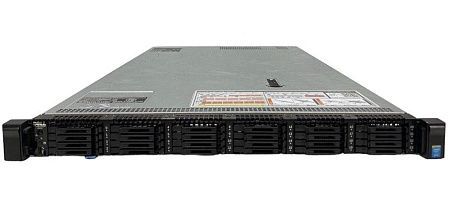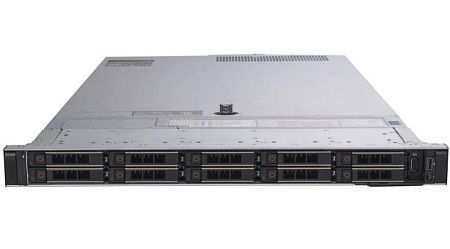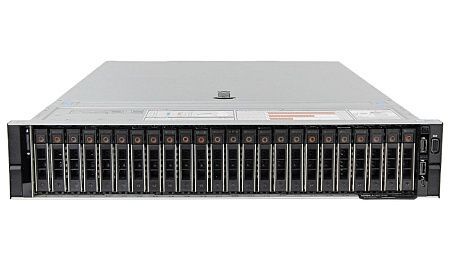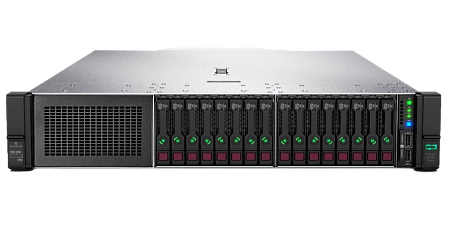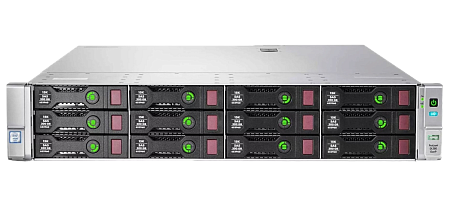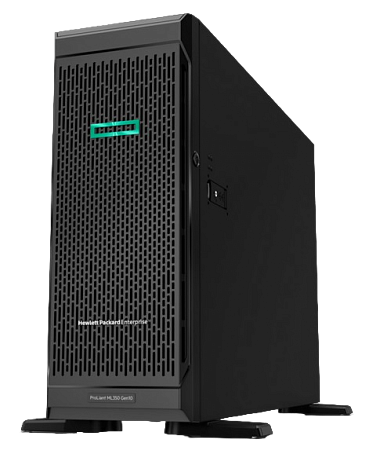Today, the performance of many applications, websites, and IT infrastructures depends on the stable operation of a wide range of different servers. Thanks to the servers responsible for hosting and displaying websites and many online services, the Internet as a global online structure exists as we all know it.
- The concept of a server
- Server classification
- Server elements
- Server cost
- Why should servers run continuously?
- Server location
- Can my computer be a server?
The concept of a server
A server is a computer or system that includes hardware and software. Servers offer a wide range of different resources for each user's personal or business purposes. The principle of server operation is that it processes user requests, and then provides the necessary information, resources, or performs specified operations. SSH keys and the client on the device are used in order to connect to the server remotely.
The origins of the server and hosting concepts lead to the beginning of the development of computer technology. Previously, around 1960, the role of centralized servers was performed by large mainframe computers. They were capable of supporting the necessary computing power as well as providing data storage features for users. Over the years, servers have been increasingly developed, offering customers powerful and multifunctional models.
Hosting services emerged in the late 20th century as a result of the advent of the global network. For the first time, hosting services were provided by Internet service providers (ISPs) or organizations that managed their own servers. As technology services evolved, companies that specialized in providing a wide variety of hosting solutions depending on specific requirements began to emerge. Thanks to the activities of such companies, it has become easier for individual users and businesses to use Internet resources for commercial purposes.
Server classification
Web server is a type of server that includes websites and applications that are accessed over the Internet. When users need to visit a certain website, they request access to the page. After receiving an HTTP request, the web server sends the necessary information to the user's web browser. Web servers perform a wide range of different functions, for example:
- server-side scripting,
- dynamic content processing,
- user session management.
Next, we'll consider what popular web server software includes:
- Microsoft IIS (Internet Information Services) – typically used on Windows systems,
- Nginx – specializes in supporting high loads and concurrent connections,
- Apache HTTP Server – characterized by well-known flexibility and open source code.
Mail server – the main task of such a server is to send, receive, and store emails. After the server receives an email from the user, it processes it (for example, performs spam filtering), and then forwards it to the recipient's mail server. The mail server uses SMTP (Simple Mail Transfer Protocol) and similar protocols to send e-mail. In order for clients to receive email, the server uses protocols such as POP3 (Post Office Protocol 3) or IMAP (Internet Message Access Protocol).
Using the File Transfer Protocol, the FTP server is capable of uploading, downloading and sharing files over the network. Users can use the FTP client software in order to connect to the FTP server and remotely perform all available file tasks. Users can use the FTP client software to connect to the FTP server and remotely perform all available file tasks.
The functionality of FTP servers is capable of performing the following operations:
- user authentication,
- access control,
- file management.
Protocols such as FileZilla Server, vsftpd (Very Secure FTP Daemon) and ProFTPD can be used for the FTP server.
DNS server is used when working with domain names. This server is necessary to establish records of domain names correspondence to IP addresses. When you enter a domain name into a web browser, the DNS server converts it to the corresponding IP address, which makes it possible for the browser to connect to the server hosting the website.
Using a server as an intermediary between a user and another server in order to achieve a high level of anonymity requires the use of a proxy server. When you send a request for an online resource, the proxy server receives the client request and forwards it to the appropriate server. Such servers provide a wide range of different functions. Among these functions, it is worth noting the following:
- load balancing between a number of servers,
- data filtering,
- blocking unwanted content,
- caching of frequently used information,
- improving security by masking client IP addresses.
Game servers offer a significant expansion of the possibilities of online multiplayer games, which makes it possible for players to interact with each other in real time. The game server is responsible for analyzing the logic of the game, synchronizing players, and storing game information (game progress, player profiles). The choice of game server software is determined by the specific game or the game engine used. The allowed number of players, as well as the quality and stability of the connection, depend on the configuration and computing capabilities of the game server.
In addition to the servers presented above, there are also a large number of other server models. The functionality of many servers is quite wide, which is an undeniable advantage for owners. As a rule, larger organizations create their own server infrastructure by renting or purchasing servers from anywhere in the world.
Server elements
Below we will look at some of the most important components of any server. This information will be useful when developing your own server solution or when renting a ready-made configuration from a hosting provider:
Processor (CPU). The processor determines the processing power of the server and performs a number of critical instructions and calculations. In order to perform multiple tasks at a time, servers can be equipped with multi-core processors.
RAM. RAM determines the performance level of the server, as it temporarily stores data that requires quick access. It is the RAM that is responsible for the server's execution of several parallel processes, as well as for the fast and efficient processing of user requests.
Throughput. This is the amount of data that is possible to transfer over a network connection in a specific period of time. Thus, the higher the throughput, the better the performance level. Higher throughput also ensures a high data transfer rate.
Memory, disk space. Storage is an integral part of any server, as it is responsible for storing the operating system, files, important information, apps, and other resources. Servers can use a wide range of different storage devices, including HDD, SSD, and NVMe.
Network Interface Cards (NICs). Network cards are required to connect servers to the network. In other words, they are responsible for the physical connection to the network infrastructure. NICs also provide support for high-speed Ethernet protocols.
Among other important components of the server, it is also worth noting the motherboard, power supplies, cooling system, etc.
Hardware
The level of performance, control, scalability, and maintenance requirements depend on the specific hardware option. When choosing the most optimal hardware option, it is important to consider the following factors:
- technical specifications,
- specific requirements for the applications to be deployed,
- need for scaling,
- budget constraints.
A dedicated server is a physical server that is intended for use by only one user or one enterprise. Such a server provides server hardware resources and ensures control over them. A dedicated server guarantees a high level of flexibility, customization, and performance. Using this type of server makes it possible to get exclusive access to server storage, processing power, and throughput. Thus, a dedicated server is considered an excellent option for demanding applications and frequently visited websites.
VPS (Virtual Private Server) is a type of server developed by dividing one physical server into a number of virtual ones. Each VPS has its own processor, storage, RAM, and dedicated resources. Each virtualized server functions independently of the others. Compared to regular shared hosting, VPS offers an improved level of flexibility, control, and privacy. Thus, VPS is perfect for users who need a larger volume of resources and an increased level of reliability and security (compared to shared hosting), but don’t want to purchase an entire dedicated server.
A cloud server is a virtual server running on a cloud computing infrastructure. Typically, cloud servers are deployed by cloud service providers. In order to provide flexible and scalable computing resources, these servers use virtualization technologies. Full control always remains with the provider, however, users are still provided with the scalability option (for example, for a fee).
There is also the option of creating your own server. You can select all the necessary components building the server yourself or just buy ready-made equipment. If you use your own server, you can virtualize the hardware and divide it into several VPS for different requirements.
It is also worth mentioning another convenient option – colocation. In this case, your server hardware is located in the data center (power supply, network connection, and cooling are provided by the data center).
Software
The most important software components of any server are: the operating system and application.
The operating system serves as a platform for running a server application. The OS is required to access basic hardware resources. It is possible to select Windows versions and Linux distributions for the server. Your choice will determine the programs that will need to be installed for your efficient work. So, choosing Windows gives you the opportunity to get compatibility with a wide range of common applications.
The operating system is also responsible for providing users with the resources necessary to communicate with the server application.
Optionally, you can install as many additional programs as your server configuration allows. The list of such programs is quite wide – from resource-intensive applications for designers to bots for trading on Binance.
Monitoring and management tools are also key elements of the software. They perform several important functions:
- resource usage tracking,
- server performance monitoring,
- troubleshooting errors and malfunctions,
- remote configuration management.
Such tools include ISPmanager, Plesk, cPanel and Nagios.
When setting up your server, you may require:
- Web server software: Apache HTTP Server, Microsoft IIS (Internet Information Services), Nginx, etc.;
- Server virtualization software: VMware vSphere, Microsoft Hyper-V or KVM;
- Mail server software: Microsoft Exchange Server, Sendmail, Postfix, Dovecot or others;
- DNS server software: BIND, Microsoft DNS Server, PowerDNS, etc.;
- Proxy server software: Squid, Apache Traffic Server, Nginx (when used as a reverse proxy), or others;
- FTP server software: FileZilla Server, vsftpd, ProFTPD, etc.;
- Database management system: PostgreSQL, MySQL, Oracle Database, Microsoft SQL Server, or others.
Server cost
The price of a server is primarily determined by its physical configuration. For example, using a home computer as a server without installing parts for an additional fee will cost you free of charge. Building a server or purchasing a separate off-the-shelf server can cost a lot of money (some models can cost thousands of dollars).
Renting a dedicated server or using VPS is a cheaper option. Next, we will consider the options that is*hosting provide:
- ready-made dedicated server configurations from $70/month,
- ready-made VPS configurations from $5/month.
You will also be able to scale the server at any time and use services such as improved protection against DDoS attacks, increased RAM, additional IP addresses at extra cost.
Why should servers run continuously?
Stable operation of the server ensures the availability of any data or online projects located on it. Servers also provide users with access to data storages, applications, websites, and network connectivity. All of the above services are available to clients due to the continuous operation of the server (without delays or equipment shutdown).
The functionality of many servers is capable of supporting the operation of many platforms that require continuous operation, such as financial systems, communication platforms, real-time analytical systems, etc. Accordingly, in order to process incoming data or messages in real time, such systems require stable server operation, without failures and delays.
An important point is also the availability of efficient and continuous server operation for all time zones. Stable and continuous operation of the server provides users from different geographical locations with access to the necessary resources and services at any time and regardless of the location of their equipment.
Server location
Server room and data center are the two most popular server locations.
A server room is a special room in a company or in the house of an individual user, dedicated to the installation of servers and all the necessary infrastructure. This dedicated space is designed to create and maintain a controlled environment that is provided with everything necessary – power supply, cooling and appropriate safety measures.
A data center is a specially equipped facility that is used in order to install a wide range of servers and network equipment. Data centers are created taking into account the necessary level of redundancy, backup power supplies, cooling systems, and security measures. Data centers often serve as hosting providers. These facilities are characterized by the placement of server equipment of several companies.
The indisputable fact is the importance of global coverage of the hosting provider offering you server equipment for rent. If you use the services of an international hosting provider, this ensures that servers can be placed in data centers around the world, in locations that are strategically important to you. This allows hosted websites and many other services to be geographically closer to the user. With this advantage, delays can be reduced and availability improved. Scaling functions, including creating your own international IT infrastructure are also provided.
Can my computer be a server?
Any computer or laptop can be a server if it has the appropriate software. There are several points to take into account:
- It is recommended to use a computer that you rarely use as a server. Then all its computing resources will be directed to performing server tasks;
- Your computer and associated server software must function continuously without being disconnected;
- It is very important to provide additional measures to protect your computer, since it may now be vulnerable to new types of attacks;
- Increasing the amount of data stored on the server leads to the need for scaling, for example the introduction of additional disk space.
Specialists of our company are ready to help you purchase the server and select the necessary server configuration for any required task.





